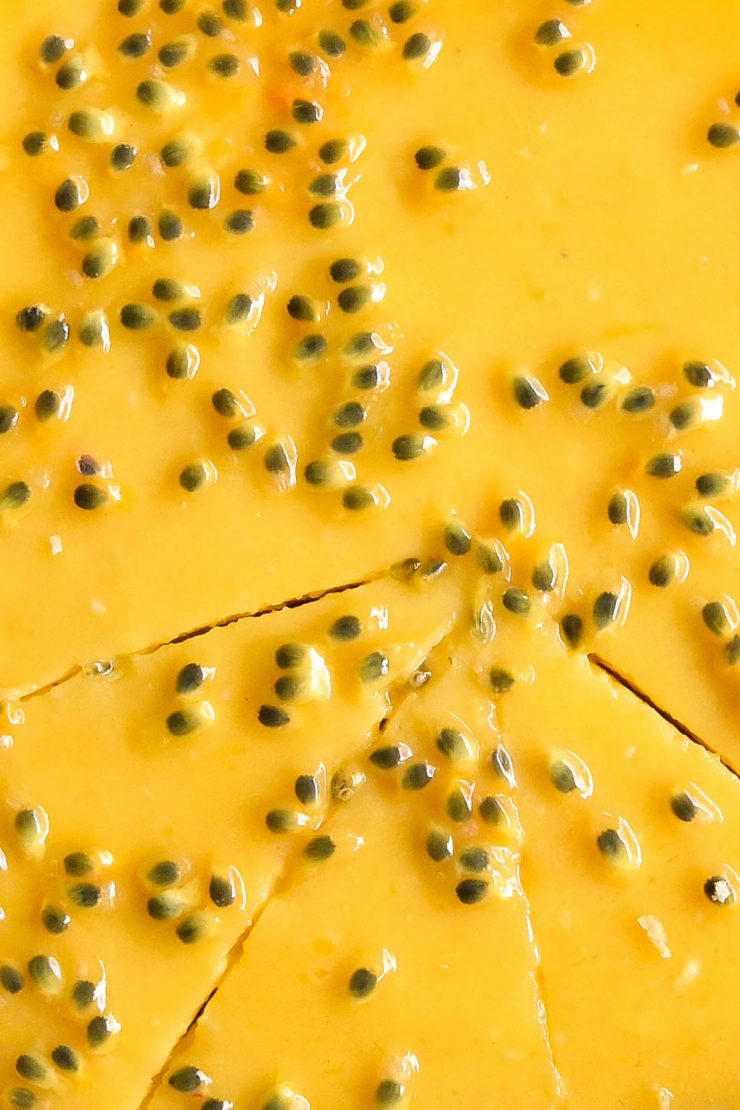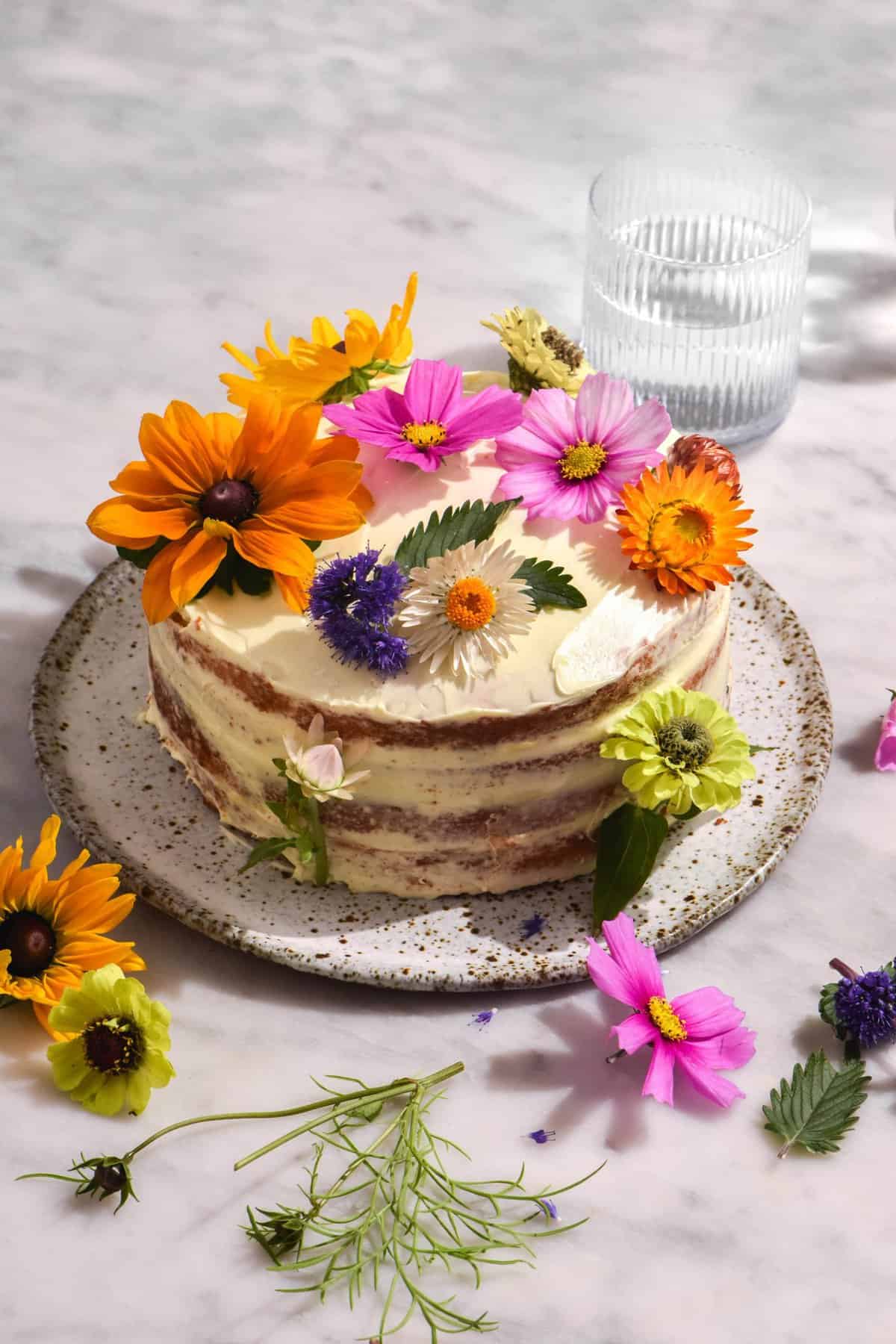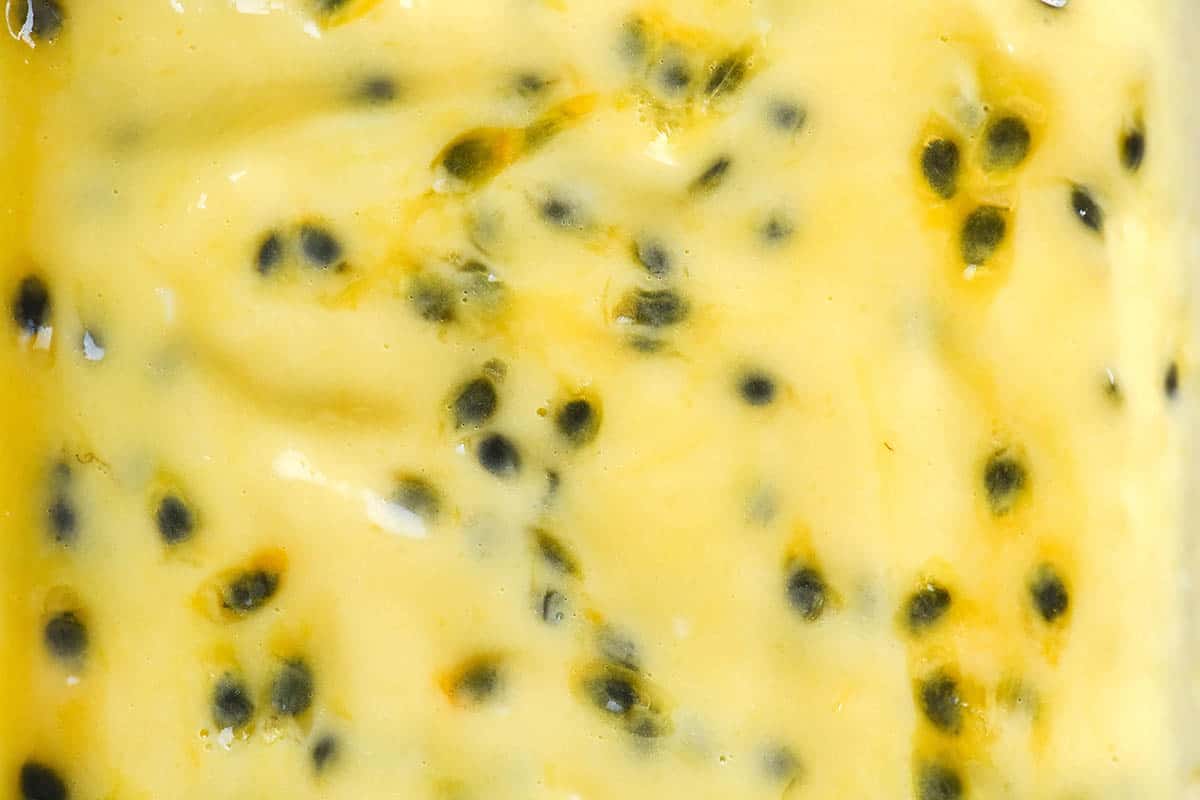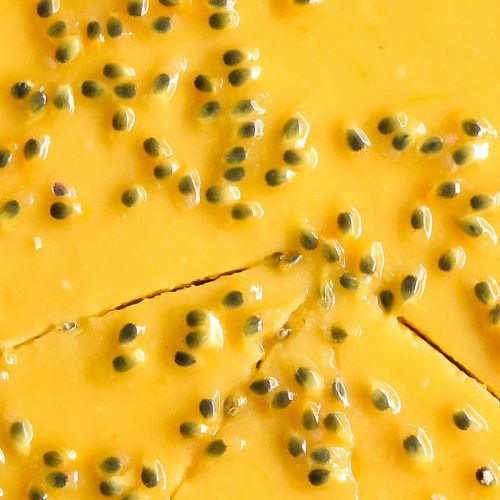
This passionfruit curd came about after I found myself with a glut of passionfruit from the garden. I’m lucky enough to have a passionfruit vine in the garden and I wanted to do this year’s fruit justice.
You’ll probably know by now that I love (and prefer) using coconut oil as opposed to butter in my curd recipes. I find that it results in a cleaner, brighter flavour that is less muted by the butter. As an added bonus, this also means the curd is completely dairy free.

Passionfruit curd (dairy free)
This curd uses passionfruit, lemon juice, coconut oil, white sugar and eggs. It’s a simple curd that is easy to put together and results in a tangy and vibrant curd that is perfectly balanced.
The curd is dairy free, low FODMAP and gluten free/grain free.
I use coconut oil in all my curd recipes, including this lime curd tart, my lemon curd and this raspberry curd pavlova. Generally speaking, I find that you can’t taste the coconut at all. In this passionfruit curd, however, I can’t help but feel that it adds a very subtle tropical flavour that is incredibly good.

Recipe tips
Measure the coconut oil melted, not solid. If you really don’t like the flavour of coconut oil, buy deodorised coconut oil. It tastes like nothing at all, genuinely!
I recommend buying more passionfruit (and lemons) than you think you’ll need. You never really know how full a passionfruit is, or whether you have accidentally bought an empty one. Nothing worse than being caught without enough of the star ingredient as you begin to bake.
Passionfruit pulp freezes and defrosts really well, so you can freeze any excess in an airtight container.
Lemons tend to vary dramatically in their acidity. Before adding the eggs, I recommend adding 125ml (1/2 Australian cup) and tasting the mixture before adding the remaining 60ml (1/4 Australian cup) if needed.
Adding a pinch of salt lends flavour complexity to your curd and I highly recommend it.
Other flavour additions that would be nice include some lime or makrut lime zest, lemon zest or a little bit of vanilla.

FODMAP notes
These FODMAP notes are current as of September 2025. They will be periodically reviewed to ensure they remain up to date.
The only two ingredients we need to discuss in terms of FODMAPs are the passionfruit and the lemon juice.
Passionfruit are low FODMAP in serves of up to 97g passionfruit per person. In 98g serves, passionfruit contains moderate amounts of fructans. This curd uses around 60g of passionfruit, so it is well within accepted FODMAP limits.
Lemon juice is low FODMAP in up to 177g serves per person. In 178g serves, lemon juice contains moderate amounts of fructans. This curd uses 125-180ml (1/2 – 3/4 Australian cups) lemon juice. This means the curd is well within accepted FODMAP limits, provided you don’t eat an entire batch in one sitting.
Eggs, coconut oil and sugar are all low or no FODMAP foods.

More dairy free dessert recipes
- Vegan, gluten free brownie cookies
- Vegan, gluten free chocolate cake from Intolerance Friendly Kitchen
- This roundup with all my best gluten free, dairy free dessert recipes
- Buckwheat chocolate mug cake from my buckwheat e-book
- Coconut panna cotta

Passionfruit curd (dairy free)
Ingredients
- 60 g (1/4 cup)* passionfruit pulp
- 110 g (1/2 cup)* caster or white sugar
- 125-180 ml (1/2- 3/4 cup)* lemon juice (see notes)
- 125 ml (1/2 cup)* melted coconut oil
- 4 extra-large eggs 200g total weight, weighed out of shell
Instructions
- Place the passionfruit pulp, sugar, 125ml (1/2 cup)* lemon juice and melted coconut oil in a medium heatproof bowl. Whisk to combine and allow to settle before tasting for acidity. Add the remaining lemon juice according to your tastes.
- Add the eggs and whisk again to combine. Set the bowl over a small saucepan 1/4 filled with water over a low-medium heat. Ensure the water won’t touch the bowl.
- Use a spatula to continue stirring the curd over a low medium heat. A spatula will prevent too many air bubbles from forming while also allowing you to scrape the sides of the bowl as the curd cooks. Once the curd has thickened (it will thicken up a little more as it cools) remove it from the heat. If you accidentally over-cook the curd, place the base of the bowl in ice cold water and whisk rapidly.
- When you’re happy with the curd, allow it to cool a little. Cover the curd with plastic wrap, flush to the curd itself so it doesn’t develop a skin. Place in the fridge and allow to cool completely (if you’re not using it straight away) before decanting into a clean, airtight container. Use it within a week or freeze it to preserve it for longer.

No Comments